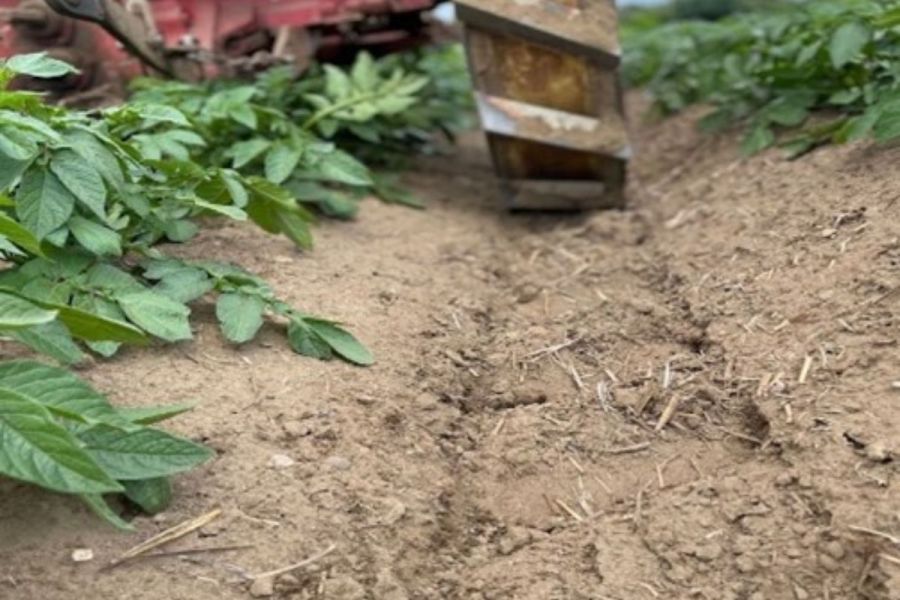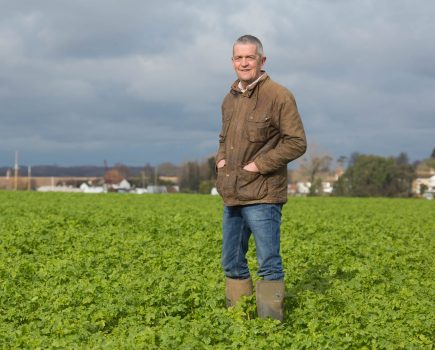By Andrew Wilson
I don’t know if it’s my age, but this year is roaring past far too quickly. It doesn’t seem five minutes since spring and suddenly it’s the first week of July and the barley is about fit!
Hay time came and went in less than a week in glorious sunshine back in June, and the combinables here in Yorkshire look pretty decent, to be fair. We were lucky and got a reasonable enough shower or two to maintain grain fill, but I don’t think we’ll be breaking yield records like we did last year. Let’s just say I’m glad I replaced the oilseed rape failure with spring oats…
Beet is the lame dog of the season at the moment, but its my own misjudgement that’s created the problem. I was too late spraying Conviso One, and the nitrogen-fuelled nurse barley got competitively big. The scruffler (side hoe in some counties) has been dusted off and I’m nearly across it now. A top dressing and inch of irrigation and I think it’ll be okay, it’s otherwise pretty healthy.
Potatoes continue to throw the curve balls, there is always a challenge isn’t there! This spring its Royal grown from de-sprouted cut seed which is showing rhizoctonia on the stems in more places than I’d like, but not to epidemic levels. The fludioxonil-treated chitted whole seed was out of the blocks in under a fortnight and hasn’t looked back – so much so that I’m starting to think about malaeic hydrazide for one of the irrigated fields. The unirrigated fields (majority) have a bit to go yet.
There’s lots of tech out there to measure everything now, but I still prefer the mucky-handed SMART test (originally devised for Reglone way back when). If the soil around the tubers will hold together in a ball on your hand, then the crop is okay to treat. It hasn’t failed me yet, be it for desiccation, irrigation or growth regulation. Cheap and simple is usually accurate and reliable!
The dry summer once again is threatening potato yields, but so far isn’t a major concern because fortunately the mercury didn’t hit 30⁰C for very long here. The dry has challenged residual herbicides though, and some rimsulfuron tidy up has been necessary in a few fields.
As part of our ongoing trials and regen work (and to entertain both the neighbours and #AgTwitter), last year we modified an old pair of rowcrop wheel rims and fitted them to a 50-year-old tractor to create a damdyker of sorts. The grips created aren’t consolidated at the ends so the water can percolate into the adjacent potato rows, instead of running off down the wheelings and ponding in the low spots.
I have to say it works quite well, particularly in some of the storms that we’ve seen this summer. We’ve done all irrigated and sloping fields. It cost 30 quid in steel, some scrap rims, and a day’s time. Progress is about four acres an hour on less than a litre of diesel an acre. My kind of treatment!
Other entertainment (at least for a certain East Anglia agronomist…) includes trying to establish some companion crops in some spuds. These potatoes were cultivated and planted at half normal depth, and as such have less soil cover. They also had half the herbicide and half the nitrogen. The thinking is the companions will provide some shade to reduce greening, suppress weeds and provide a little feed. The sums and QC will be interesting in due time.
The last time we used companion crops, I made a bad choice of species, sowed too early and created a blight and slug problem with crop failure yields. Glutton for punishment? Maybe – we have to push boundaries to learn new things sometimes.
June was a busy month for events for me. On 20 June, I made the 340-mile round trip to Wisbech for the GB Potatoes roadshow. I feel that it’s important for our industry to have both a voice and a point of contact, and getting on board with this is the way to achieve that. Speakers were good, discussion was open and frank, contacts were made, and knowledge exchanged. Extracting value from cost sometimes needs a bit of effort, but I came away having felt my time and fuel had been justified. Waiting ‘to see what happens’ will be too late for this organisation to flourish – we are stronger together, particularly in political circles.
I also attended Groundswell after a two-year hiatus, but more on that next month. It would be remiss of me to close this month’s column without mentioning the sterling efforts of Lucy de la Pasture – ‘The Gaffer’.
In my opinion, she has made a significant and positive mark on CPM under her watch – and not only for her patience with farmers pushing deadlines! Her effort in keeping the magazine current, varied and interesting to a ‘must read’ level is something to really be proud of. Good luck in your future endeavours Lucy, it’s been a pleasure working with you.
This article was taken from the latest issue of CPM. For more articles like this, subscribe here.
Sign up for Crop Production Magazine’s FREE e-newsletter here.




